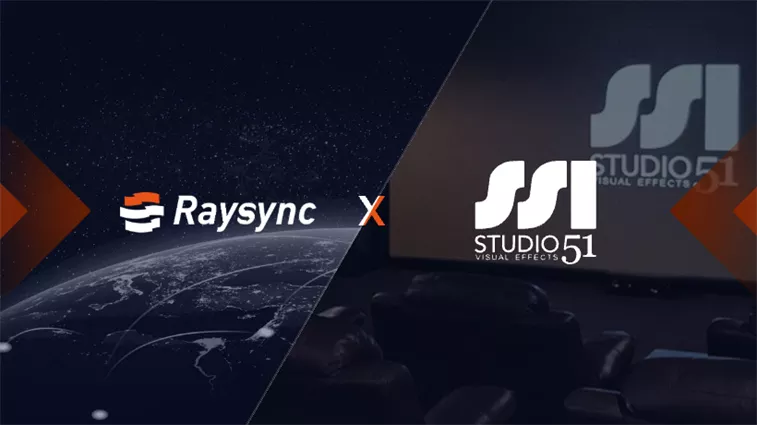What is Managed Transfer: A Guide to Secure Data Sharing
Managed transfer, also known as managed file transfer (MFT), is a technology solution designed to securely and efficiently transfer files and data across a network. Unlike traditional methods such as FTP or email, MFT offers advanced features like end-to-end encryption, automated workflows, and detailed audit logs.

MFT solutions also provide amazing monitoring tools, allowing you to oversee all transfers, troubleshoot issues, and maintain compliance. Overall, they offer a reliable and secure way for enterprises to handle their data sharing needs, protecting sensitive information and ensuring smooth operations.
Introduction of Managed Transfer
Managed Transfer, also commonly referred to as Managed File Transfer (MFT), is a technology that automates and secures the transfer of data between computers or servers.
It's essentially a software platform that takes the manual work out of file transfers and adds a layer of security on top.
Departing from conventional methods like FTP or HTTP, managed file transfer software introduces a paradigm shift in speed, security, and reliability.
Why Should Enterprise Use Managed Transfer
In today's fast-paced digital landscape, enterprises face the challenge of securely transferring large volumes of data across various networks, both internally and externally.
Managed transfer solutions offer a comprehensive approach to address this challenge, providing organizations with the tools and capabilities to optimize their data transfer processes.
With Managed Transfer, organizations can:
- Enhance Efficiency: Raysync's high-speed transfer protocol accelerates data transfer processes, saving time and resources.
- Ensure Security: AES-256 encryption and TLS data transmission ensure the confidentiality and integrity of transferred data, safeguarding against cyber threats.
- Improve Reliability: Features like breakpoint resume and retransmission enhance transfer stability, minimizing the risk of data loss or corruption.
- Achieve Compliance: MFT file transfer solutions offer detailed audit logs and compliance features, helping organizations meet regulatory requirements and industry standards.
By embracing managed file transfer technology, enterprises can optimize their data transfer processes, mitigate risks, and drive business growth.
How to Choose The Right Managed Transfer for Enterprise
The process of selecting the right managed file transfer software begins by assessing your specific requirements and objectives for managed file transfer.
Once you know your requirements, here are some points you can look for while choosing the right MFT file transfer solutions:
- High-Speed Transfer for enabling swift and efficient transmission of large volumes of data.
- Advanced encryption techniques and compliance features to ensure that sensitive data remains protected during transit, mitigating the risk of breaches and compliance violations.
- Scalable solutions that can accommodate the increasing volume of data transfer requirements as enterprises grow.
- Ease of Use: Intuitive interface and seamless integration facilitate smooth implementation and minimal disruption to workflows.
- Vendor Support: Robust technical support and training resources.
By carefully evaluating these factors, enterprises can choose a MFT file transfer solution that meets their specific requirements and enhances their data transfer capabilities.
3 Steps to Use Managed Transfer
Using Managed Transfer is very simple and efficient. Here’s how you can get started in just three simple steps:
- Setup and Configuration: Install the MFT file transfer client on your system and configure the settings according to your enterprise requirements. This involves setting up user accounts, defining access permissions, and customizing the transfer settings.
- Initiate Transfers: Once setup is complete, you can start transferring files immediately. You can choose between peer-to-peer transfers or server-based transfers, depending on the confidentiality and size of the files.
- Monitor and Manage: The dashboard for many managed file transfer software allows you to view detailed logs, check transfer status, and manage ongoing transfers to ensure efficiency and reliability throughout the process.
2 Use Cases of Managed Transfer
Raysync is a powerful managed file transfer solution designed to address several critical data transfer needs in modern enterprises. Here’s how Raysync specifically caters to each use case:
High-speed Large Data Transfer
Enterprises handling large volumes of data, such as media companies like Studio 51 and scientific research organizations, require rapid transfer capabilities to maintain efficiency and productivity.

Raysync excels in this area by leveraging its proprietary high-speed transfer protocol, which can significantly outpace traditional methods like FTP.
Cloud FTP Alternative
Traditional file transfer protocols like FTP are often criticized for their slow transfer speeds, security vulnerabilities, and lack of support for modern compliance requirements.

Raysync serves as an excellent alternative of FTP for its client, Elógica - A Brazilian IT Provider, offering enhanced security features such as AES-256 encryption and TLS data transmission encryption.
Managed Transfer with High-Speed Recommended - Raysync Enterprise
In the modern digital landscape, enterprises face the challenge of managing large-scale data transfers efficiently without compromising on speed or security. Raysync Enterprise emerges as a highly recommended solution, particularly tailored for high-speed MFT file transfer.

Traditional protocols often fail under the strain of large file sizes and long-distance data routes, but Raysync is engineered to overcome these hurdles, offering speeds up to 100 times faster than FTP and surpassing 96% bandwidth utilization.
This makes it an ideal choice for industries dealing with petabyte-scale data transfers or needing to transmit high-definition media files quickly. Let’s go through some pros and cons of Raysync and know more about this managed file transfer software!
Pros:
- High-Speed Transfer: Raysync Enterprise utilizes a UDP-based transfer protocol, enabling speeds up to 100 times faster than FTP. .
- Security Prioritization: Raysync prioritizes data security with AES-256 encryption and TLS encrypted transfers, safeguarding sensitive information against external threats.
- Cross-Platform Compatibility: The software offers robust support for cross-platform compatibility, allowing seamless integration with existing enterprise systems.
Cons:
- Cost Consideration: While Raysync Enterprise offers exceptionally advanced features and capabilities, it may come with a higher initial investment.
- Complexity in Deployment: Deploying Raysync Enterprise may require some level of technical expertise and effort during the initial setup and configuration phase.
- For enterprises looking to elevate their data transfer capabilities without compromising on efficiency or security, Raysync Enterprise stands out as a superior choice, offering the ultimate solution for high-speed managed file transfer.
Conclusion
Managed transfer solutions like Raysync offer a compelling advantage for enterprises looking to enhance data transfer processes efficiently and securely.
With features like advanced encryption, robust monitoring, and seamless integration with existing systems, managed transfer technology not only streamlines workflows but also fortifies data protection and compliance.
You might also like

Industry news
July 10, 2024Detailed Explanation of P2P File Sharing [Latest Update]
Discover the best P2P file sharing tools: uTorrent for fast downloads and efficiency, qBittorrent for open-source reliability, and BitTorrent for decentralized file distribution.

Industry news
May 29, 2024What Is Enterprise File Sharing in 2024 [The Ultimate Guide]
Learn about the best practices and solutions for secure enterprise file sharing in 2024 with secure collaboration methods like cloud storage, managed file transfer, and on-premises solutions.

Industry news
June 28, 2022The Best Way to Send Large Files
No matter what problems you encounter when sending large files,we’ve figured out the best solution for you how to send large files.